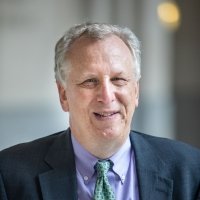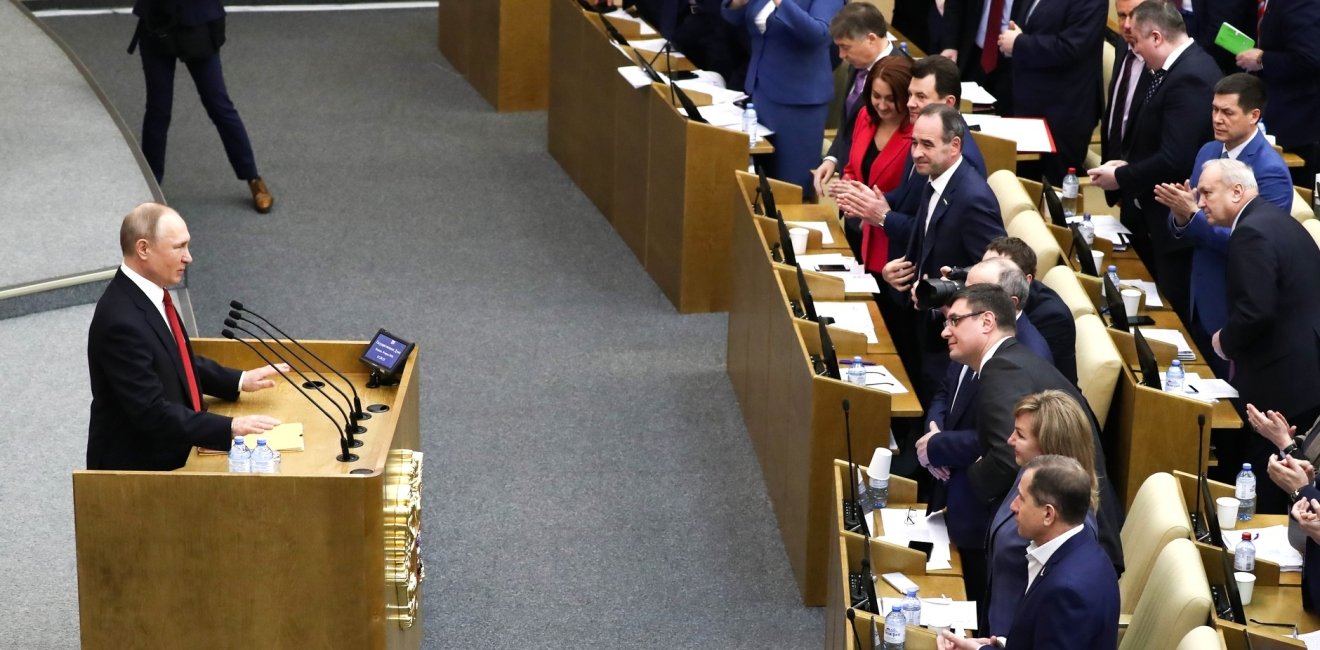
A blog of the Kennan Institute
BY WILLIAM POMERANZ
In the end, it was all a big show. Putin unleashed constitutional reform in his January 15, 2020, state of the nation address with a hint of institutional change and a theoretical path forward to a post-Putin era. He formally ended the ensuing debate on March 10 with his acceptance of the Duma’s nullification amendment that will allow him to seek another two terms in office and potentially rule until 2036. The legally symbolic (and inappropriately named) all-Russian plebiscite on the constitutional reforms has now been delayed because of the global pandemic, but like the recent Constitutional Court decision upholding the amendments, the final outcome is not in doubt.
The end run around presidential term limits naturally has attracted the most attention from commentators. Other amendments, however, also strike against democratic core principles—notably affecting the separation of powers, the independent judiciary, the secular state—while bolstering the prosecutor’s office (procuracy) and the ascendancy of social rights over individual rights. Putin previously spoke of his loyalty to Russia’s founding law—and its durability—but with these changes, he is transforming the Yeltsin constitution into the Putin constitution
No one should idealize or over-romanticize the 1993 constitution. Twenty-seven years after the adoption of Russia’s most liberal constitution, its rights and liberties largely remain aspirational, not real. The 1993 constitution also possessed strong pro-statist tendencies that former president Boris Yeltsin relied on and Putin expanded. Indeed, many of the new constitutional amendments enshrine changes that have already been adopted in one form or another into Russian legislation.
Procedurally, Putin has paid strict attention to the letter—but not the spirit—of the law. The most comprehensive changes have occurred to the constitution’s first chapter, which addresses the fundamentals of Russia’s constitutional system. This chapter was thought to be impervious to change, since Article 135 states that Chapters 1, 2, and 9 can only be revised by calling a constitutional assembly. Putin clearly was reluctant to open this Pandora’s box. Therefore, he did not summon such a gathering and made no explicit changes to these chapters. Instead, Putin relied on the lower legal threshold of federal constitutional laws—which can be passed to revise Chapters 3–8—to introduce changes that substantially rewrote the legal guarantees expressed in Chapter 1.
Putin’s actual reforms are both implicit and direct. To begin with, he has upgraded the status of ethnic Russians within the country by referring to the Russian language as the language of the state-forming people. Such a statement will invariably alienate the country’s non-Russian inhabitants (more than 20 percent of the population). It further represents a clear retreat from the 1993 constitution’s appeal to the multinational peoples of the Russian Federation.
The amendments also have indirectly undermined the first principle articulated in Article 2 of the Russian constitution, namely, that the individual rights and freedoms shall be of supreme value. Instead, the amendments significantly expand the role of social rights to include a minimum wage, pension guarantees, and a single, socially oriented state policy in culture, science, health policy, and so on. No similar provisions were introduced to reinforce the supremacy of individual rights; instead, they now must somehow be balanced with social rights. An oblique reference in support of civil society was included in the amendments, but while this provision talks about NGOs cooperating with the state, it makes no corresponding statement of support for NGOs working in opposition to the government.
The importance of the social state was included in the original1993 constitution; its relevance, however, has now been significantly enhanced. A similar upgrade surrounds the importance of state unity. The 1993 constitution included scattered references to the unified state. The amendments essentially raise this idea to first principles, emphasizing state unity as one of the major inheritances from a thousand years of Russian history. Another historical legacy, the belief in god, was also included in the amendments despite the 1993 constitution’s declaration that Russia is a secular state.
The inclusion of god, traditional family values (i.e., marriage consisting of a man and a woman), and prohibitions against criticism of the Russian people in the defense of the fatherland reflect how Putin’s patriotic conservatism has been de facto incorporated into Russia’s founding law. Other changes are blunter. The supremacy of international law vis-à-vis domestic law has been seriously eroded. In 2015 the Constitutional Court received the right to overturn European Court of Human Rights decisions that that ran counter to the Russian constitution. An amendment now enlarges this principle to cover any international tribunal.
The reforms also weaken the judiciary, most notably by allowing the president to initiate the removal of Constitutional Court, Supreme Court, appellate, or cassation judges. Local self-government suffers a similar decrease in power, although its independence has never been backed up by sufficient financial resources. In any event, local self-government has now been swept up into a unified system of public power, to be defined by future legislation.
By contrast, the amendments largely restore the procuracy’s supervisory powers over the legal system, including supervision over the observance of the constitution and its laws. The 1993 constitution deliberately downgraded the role of the procuracy, the country’s longest-running legal institution, but the 2020 amendments restore the procuracy’s historical mission, namely, to serve as the eyes of the state.
Finally, at the top of Russia’s legal hierarchy once again sits the Russian president. Gone is the speculation about the future role of the state council or the possibility of a more vibrant legislature. Instead, the government—the head of the theoretically autonomous executive branch—has now been placed under the general leadership of the president.
Putin now owns the constitution. He has relied and expanded on certain longstanding principles and values, and reforged a unified, autocratic, centralized, and highly personalized state. He optimistically hopes that this new edition of Russia’s founding law will serve future generations of Russians for not just twenty but fifty years. That would make it the longest-running constitution in Russian history. Through these reforms, however, Putin has shown the precarious and transient nature of the country’s highest law. Russia will require yet another constitution if it ever wants to reclaim its status as an emerging democracy.
The opinions expressed in this article are those solely of the author and do not reflect the views of the Kennan Institute.
Author


Kennan Institute
After more than 50 years as a vital part of the Wilson Center legacy, the Kennan Institute has become an independent think tank. You can find the current website for the Kennan Institute at kennaninstitute.org. Please look for future announcements about partnership activities between the Wilson Center and the Kennan Institute at Wilson Center Press Room. The Kennan Institute is the premier US center for advanced research on Eurasia and the oldest and largest regional program at the Woodrow Wilson International Center for Scholars. The Kennan Institute is committed to improving American understanding of Russia, Ukraine, Central Asia, the South Caucasus, and the surrounding region through research and exchange. Read more

Explore More in The Russia File
Browse The Russia File
Chechnya as a Model of Modern Russia

Russia’s Indigenous Communities and the War in Ukraine

Gas and Power in a Changing US–Russia Relationship

